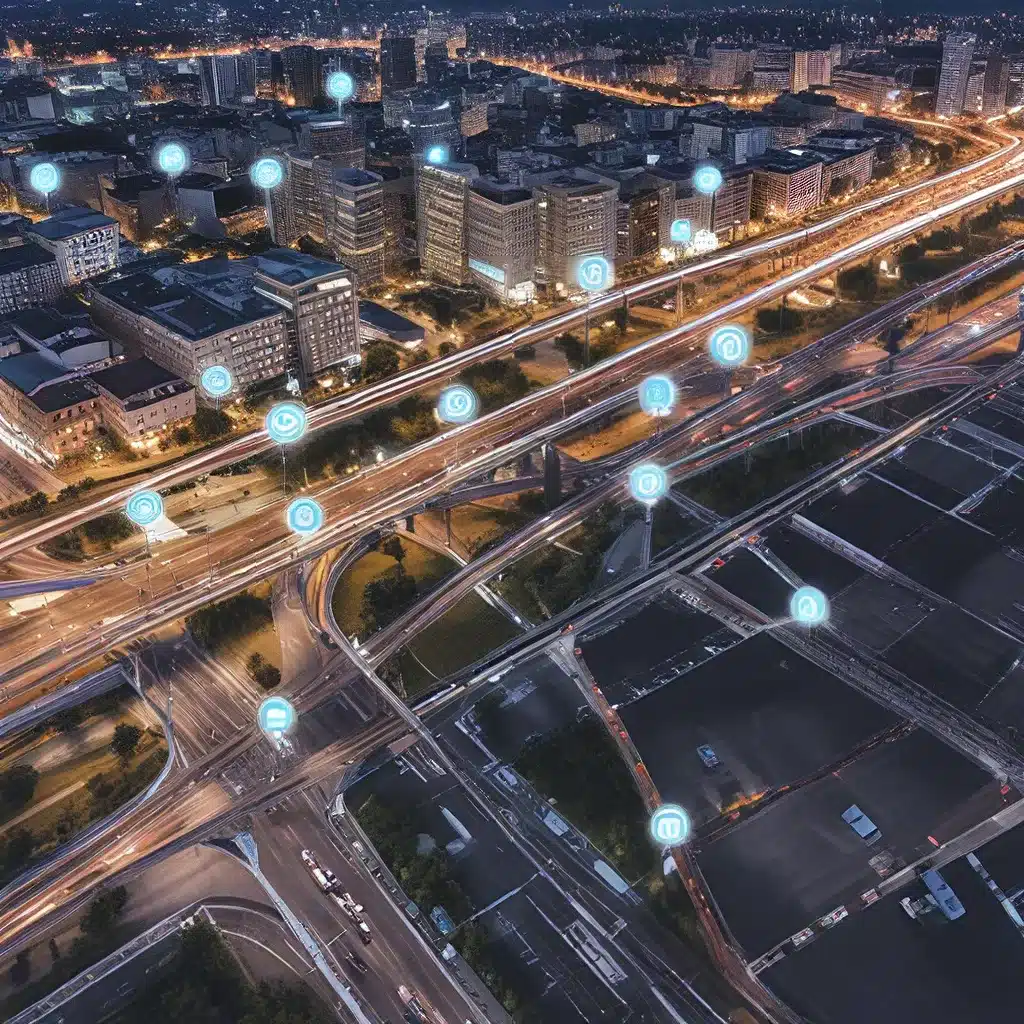
In the rapidly evolving world of technology, the Internet of Things (IoT) and sensor networks are transforming how we interact with and understand our surroundings. As the IoT sensors market continues to surge, reaching an estimated value of $238 billion by 2033, it’s crucial for professionals, researchers, and enthusiasts alike to stay informed about the latest trends and applications driving this dynamic industry.
Unlocking the Potential of Sensor Networks
At the heart of the IoT revolution are sensor networks – intricate webs of interconnected devices that collect, transmit, and analyze data from the physical world. These sensors, ranging from pressure sensors to temperature and motion detectors, are the backbone of IoT systems, enabling enhanced connectivity, smarter decision-making, and unprecedented levels of efficiency across a wide range of industries.
One of the key factors fueling the growth of the IoT sensors market is the increasing demand for data-driven optimization and automation. By embedding sensors into everyday objects and infrastructure, businesses and organizations can gather real-time insights that inform critical decisions, streamline operations, and drive innovation. From smart cities monitoring traffic patterns and precision agriculture optimizing irrigation, to industrial IoT applications improving asset management and healthcare IoT enhancing patient monitoring, the applications of sensor networks are truly limitless.
Sensor-networks.org is at the forefront of this technological revolution, providing a platform for experts, researchers, and enthusiasts to explore the latest advancements and use cases in the field of sensor networks and IoT.
Navigating the Sensor Network Landscape
As the IoT ecosystem continues to evolve, understanding the diverse landscape of sensor network technologies is crucial for anyone looking to capitalize on the opportunities it presents. From the underlying network architectures and communication protocols to the various sensor types and energy management strategies, mastering the intricacies of sensor network design is key to unlocking its full potential.
Network Architectures and Communication Protocols
One of the fundamental aspects of sensor network design is the network architecture. IoT systems can leverage a range of topologies, including star, mesh, and hierarchical configurations, each with its own unique advantages and trade-offs. For example, star networks offer simplicity and centralized control, while mesh networks excel in reliability and scalability. The choice of network architecture directly impacts factors such as data routing, energy efficiency, and fault tolerance.
Equally important are the communication protocols that enable seamless data exchange within sensor networks. Wired protocols like Ethernet and wireless protocols such as Wi-Fi, Bluetooth, and low-power wide-area networks (LPWANs) like LoRa and NB-IoT each have their own strengths and weaknesses, catering to different application requirements and environmental constraints.
| Network Topology | Advantages | Disadvantages |
|---|---|---|
| Star |
– Simplicity – Centralized control – Straightforward data routing |
– Single point of failure – Limited scalability – Higher energy consumption |
| Mesh |
– Reliable data transmission – Scalable network expansion – Redundant data paths |
– Increased complexity – Higher coordination overhead – More resource-intensive |
| Hierarchical |
– Improved scalability – Efficient data aggregation – Balanced energy consumption |
– More complex setup and management – Potential for unbalanced load distribution – Requires careful design and coordination |
Sensor Types and Applications
The diverse range of sensor types available for IoT applications is another critical consideration. From pressure sensors and temperature sensors to motion detectors and image sensors, the choice of sensor technology depends on the specific use case and the required data inputs. Understanding the capabilities, limitations, and suitability of different sensor types is essential for designing effective and efficient sensor network solutions.
These sensor technologies enable a wide array of IoT applications across various industries, including smart cities, precision agriculture, industrial automation, healthcare monitoring, and environmental surveillance. By strategically deploying sensor networks, organizations can harness the power of data to optimize processes, enhance decision-making, and drive sustainable innovation.
Energy Management and Power Considerations
One of the key challenges in sensor network design is energy management. Sensor nodes, often deployed in remote or inaccessible locations, must operate reliably and efficiently while minimizing power consumption. Strategies such as energy harvesting, duty cycling, and power-aware protocols play a crucial role in ensuring the long-term viability and sustainability of sensor networks.
Advancements in low-power electronics, energy-efficient communication protocols, and innovative power sources (e.g., solar, piezoelectric, thermoelectric) are paving the way for the development of energy-efficient sensor networks that can operate autonomously for extended periods, reducing maintenance costs and environmental impact.
Securing the IoT Ecosystem
As sensor networks become increasingly ubiquitous, the need for robust security and privacy measures cannot be overstated. IoT devices, by virtue of their distributed nature and limited computational resources, are inherently vulnerable to a wide range of cyber threats, including data breaches, unauthorized access, and malicious attacks.
Addressing these security challenges requires a multifaceted approach, encompassing secure device design, end-to-end encryption, access control mechanisms, and continuous monitoring and threat detection. Emerging technologies like blockchain, edge computing, and artificial intelligence are being leveraged to enhance the security and resilience of IoT ecosystems, safeguarding the integrity of sensor data and protecting critical infrastructure.
Towards a Smarter and More Connected Future
The rapid evolution of sensor network technologies and the IoT sensors market is transforming the way we interact with the physical world. From smart cities and precision agriculture to industrial automation and healthcare monitoring, the potential applications of sensor networks are vast and ever-expanding.
By staying informed about the latest trends, technologies, and use cases in the sensor network landscape, professionals, researchers, and enthusiasts can position themselves at the forefront of this technological revolution. By embracing the power of sensor networks and IoT, we can unlock new frontiers of innovation, efficiency, and sustainability, paving the way for a smarter and more connected future.